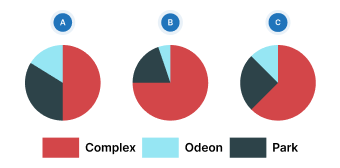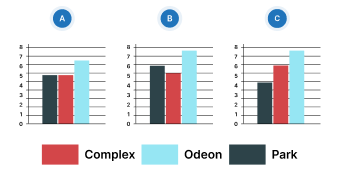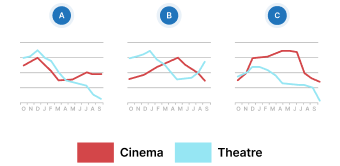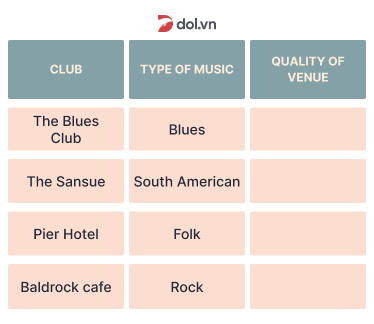Đề thi IELTS Online Test Practice Test Plus 1 - Listening Test 1 - Download PDF Câu hỏi, Transcript và Đáp án
Luyện tập đề IELTS Online Test Practice Test Plus 1 - Listening Test 1 được lấy từ cuốn sách Practice Test Plus 1 với trải nghiệm thi IELTS trên máy và giải thích đáp án chi tiết bằng Linearthinking, kèm answer key và list từ vựng IELTS cần học trong bài đọc.
Section
👂️ Bài nghe section 1
❓ Tapescript section 1
🔥 Đáp án & giải thích section 1
Giải thích chi tiết
 Mình cần nghe xem beginner's course giá bao nhiêu
Mình cần nghe xem beginner's course giá bao nhiêu
=> Biết đáp án sắp tới khi nghe "We might try the beginner's course. What sort of prices are we looking at?"
 Nghe thấy "the beginner's course [...] is $320 - no, sorry 330 - it's just gone up"
Nghe thấy "the beginner's course [...] is $320 - no, sorry 330 - it's just gone up"
=> Giá cũ là 320, nhưng vừa mới tăng lên thành 330
=> Loại đáp án B 
=> Đáp án là C
=> Đáp án là C 
 Có nghe thấy $190 và $430
Có nghe thấy $190 và $430
=> Tuy nhiên đây là giá của các course khác (introductory và pilot course) chứ không phải beginner's course
=> Loại đáp án A và D 
Section
👂️ Bài nghe section 2
❓ Tapescript section 2
🔥 Đáp án & giải thích section 2
Giải thích chi tiết
 Đáp án cần điền là số lượng được sản xuất (number made ... )
Đáp án cần điền là số lượng được sản xuất (number made ... )
=> Biết đáp án sắp tới khi nghe "How many were there?" (hỏi về số lượng)
 Nghe tiếp thấy "only 473 Duesenberg J-types were ever built..."
Nghe tiếp thấy "only 473 Duesenberg J-types were ever built..."
=> Đáp án là 473 
Section
👂️ Bài nghe section 3




❓ Tapescript section 3
🔥 Đáp án & giải thích section 3
Giải thích chi tiết
 Đáp án cần điền là tên của dự án (Title of project: .... )
Đáp án cần điền là tên của dự án (Title of project: .... )
=> Đáp án sẽ tới khi nghe "We've done a survey" (survey là một phần của project)
 Nghe thấy "we've called our project 'Out and About'
Nghe thấy "we've called our project 'Out and About'
=> Đáp án là Out and About 
Section
👂️ Bài nghe section 4
break up ground surface, e.g. off-road vehicle use.
remove protective plants, e.g.
.34
❓ Tapescript section 4
🔥 Đáp án & giải thích section 4
Giải thích chi tiết
 Mình cần nghe xem cái gì gây ra dust storms (Main focus of lecture: the impact of ... on the occurrence of dust storms)
Mình cần nghe xem cái gì gây ra dust storms (Main focus of lecture: the impact of ... on the occurrence of dust storms)
=> Biết đáp án sắp tới khi nghe "Today we're going to look more closely what causes dust storms..."
 Nghe thấy what we want to focus on today (=main focus)
Nghe thấy what we want to focus on today (=main focus)
Nghe tiếp thấy" ...the extent to which human activity is causing them "
=> Human activity dẫn đến sự hình thành của dust storm
=> Đáp án là human activity/activities 


